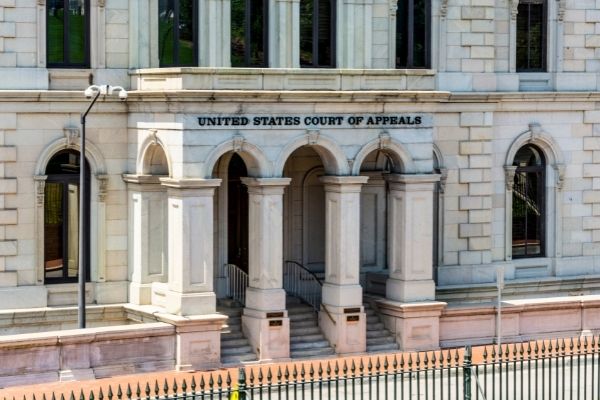Top Federal Crime Lawyer: Specialized Legal Protection for Federal Offenses
Top Federal Crime Lawyer: Specialized Legal Protection for Federal Offenses
Blog Article
Debunking the Refine of Federal Appeals: What You Need to Know
Navigating the elaborate realm of government allures can usually seem like passing through undiscovered waters for those unknown with the process. Recognizing the subtleties of appellate court jurisdiction, the ins and outs of submitting a notice of charm, offering a compelling quick, and making a persuasive oral argument are crucial elements that can considerably influence the outcome of a case. By unraveling the layers of complexity bordering government charms, individuals can get a clearer insight into the systems that govern this important phase of the lawful system.
Comprehending Federal Appeals Process
Looking into the elaborate world of the federal appeals procedure introduces a methodical and structured journey via the judicial system - montana federal appeal lawyers. Federal charms work as an essential device for assessing choices made by lower courts. Understanding this process is crucial for any individual associated with legal process at the federal degree
The procedure normally begins with a party dissatisfied with a lower court's ruling submitting a notification of charm. This causes a testimonial by a greater court, where a panel of judges analyzes the legal disagreements provided by both celebrations. Briefs detailing the legal reasoning behind each celebration's position are submitted, and oral debates might be heard to clear up complicated concerns.
The appellate court's decision is based on a thorough exam of the lower court's procedures and the arguments presented. As soon as the appellate court reaches a decision, it can attest, turn around, remand, or change the reduced court's ruling, offering clarity and finality to the legal disagreement.
Appellate Court Jurisdiction Described

Appellate courts have territory over specific kinds of cases, usually those including lawful errors, step-by-step concerns, or inquiries of legislation instead than valid disputes. The territory of appellate courts is normally laid out in laws and regulations that control the court system. Understanding appellate court territory is important for parties included in the allures procedure as it figures out whether an instance is qualified for testimonial and the degree to which the appellate court can interfere in the lower court's decision.
Filing a Notification of Charm
The initial action in commencing the government appeals process includes submitting a Notice of Allure with the proper appellate court. top california federal appeals attorneys. This crucial file officially informs the court and the other celebrations included in the case that the appealing event means to seek a review of the reduced court's decision. Submitting a Notice of Allure is a stringent step-by-step need that establishes the appellate process in movement
When preparing the Notice of Charm, it is vital to make sure conformity with the specific guidelines and guidelines of the pertinent appellate court. The file needs to typically consist of info such as the situation name, the lower court's name, the date of the judgment being appealed, and a concise statement showing the grounds for the appeal.
Timeliness is of the essence when filing a Notification of Allure. Missing out on the target date for sending this paper can result in the charm being dismissed, emphasizing the importance of punctual and accurate initiation of the appeals process. It is a good idea to look for legal advice to browse the complexities of filing a Notice of Allure properly.
Rundown and Oral Debate
In the appellate procedure, presenting created briefs and taking part in dental arguments play essential duties in advocating for the appealing celebration's placement prior to the appellate court. Briefs are extensive legal files that outline the parties' arguments, legal authorities, and evaluation sustaining their placements. These created entries supply the court with a thorough understanding of the facts of the situation, the appropriate legislation, and why the appealing party believes the reduced court's decision should be overturned.
Following the submission and evaluation of the briefs, dental arguments supply the parties a possibility to more clarify their settings, deal with any kind of concerns the appellate courts may have, and highlight key points from their written briefs. Dental arguments are a possibility for the attorneys to encourage the courts through spoken campaigning for and reactions to questions from the bench.

Obtaining the Appellate Court Decision

Verdict
In final thought, the government appeals procedure is a complicated but critical action in seeking justice. Understanding the appellate court jurisdiction, submitting a notice of charm, preparing briefs, and offering dental debates are all vital parts of this procedure. Ultimately, getting the appellate court decision can give clearness and resolution to legal conflicts. It is important to browse the government charms process with diligence and attention to detail to accomplish a reasonable outcome.
As we advance from understanding the government charms process to exploring the intricacies of appellate court territory, an essential aspect comes to light concerning the authority and limits of these higher courts in the legal landscape. Appellate court jurisdiction refers to the range of instances that a specific appellate court has the power to assess and determine upon. Unlike test courts that listen to situations for the initial time, appellate courts are restricted to assessing choices made by reduced courts. Recognizing appellate court territory is crucial for celebrations entailed in the appeals procedure as it determines whether a situation is qualified for evaluation and the level to which the appellate court can intervene in the lower court's decision.
Whether the appellate court attests, turns around, or remands the reduced court's decision, comprehending the implications of the judgment is essential for all events entailed in the appellate process.
Report this page